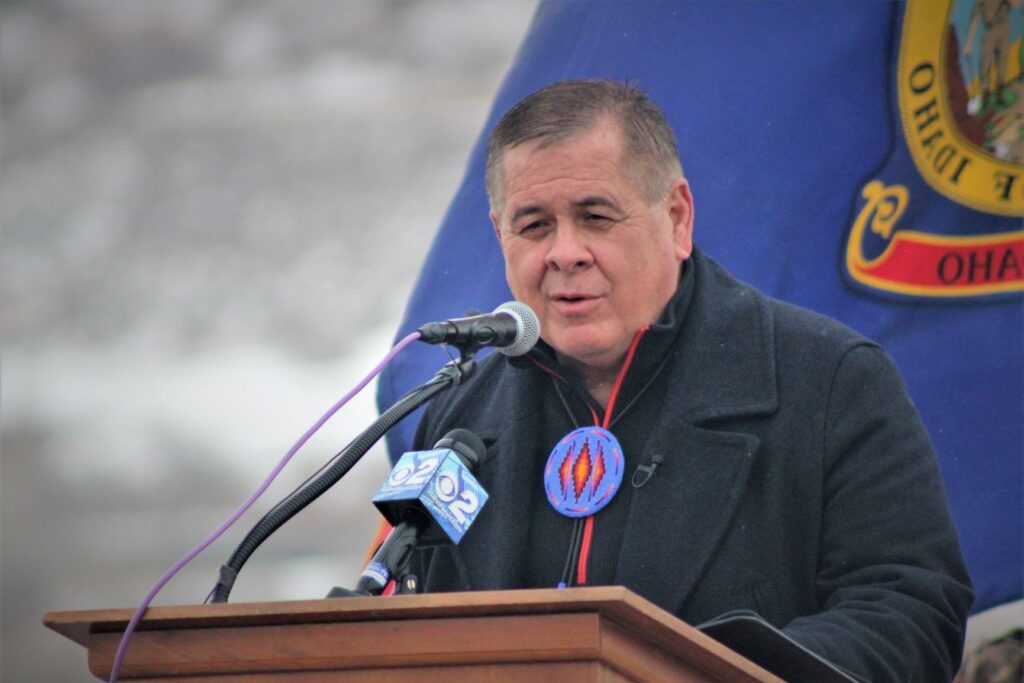A file photo of past Northwestern Band of the Shoshone Tribal Chairman Darren Parry speaking to an audience at the Bear River Massacre Ceremony last Jan. 29, 2921.
PRESTON – The Northwestern Band of the Shoshone Nation invited Franklin County residents to share their history of early interactions with their tribe recently.

Darren Parry, Vice Chairman of the Northwestern Shoshone Nation, said it was a positive experience and he came away with some jewels from the evening that will be beneficial to his cause.
“One of the stories came from Thaya Gilmore, who told us about her grandfather’s journal from 1894,” he said. “She told us how her great-great grandfather and his family were friends with the Indians.”
Thaya was happy to learn in her life she had visited with the Northwestern Band, just as she her great-great-grandfather had been doing.
“Another story came from Matt Bell. His great-great-great grandfather was John Kommish, and his diary had a story of him watching the massacre with Porter Rockwell, using Porter’s telescope.
“John had supposed all the Indians had been killed, but my great-great-great-grandfather Chief Sagwitch actually came to John and his family afterwards and his family cleaned and dressed his infected gunshot wound for many weeks until it healed.”
“Getting the stories is something the tribal counsel and tribal elders wanted to do,” Parry added. “We had several Franklin County residents tell us they had stories to share.”
The tribal council discussed it and they felt like it was necessary to listen to the people that settled the area and get their point of view.
“There are several generations that have passed since then and for a long time many thought it was better not to talk about it,” he said. “Now, it’s time to share and listen to stories that have been passed down to families.”
Every year on Jan. 29 at 11 a.m. crowds come to commemorate the massacre of their people on the same day back in 1864.
The tribe purchased over 600 acres of ground where their ancestors wintered near hot springs next to the Bear River and where historians believe Colonel Patrick Edward Conner and about 200 California volunteers attacked and took the lives of over 300 Shoshone men, women and children.
They sing songs and talk about the terrible things that happed that day, but what is never told is the kindness early pioneers showed to the tribe. There are stories of residents that came in after the massacre and mended the wounded and took them into their homes.
“There are people who have stories and artifacts found at the site,” Parry said. “We don’t want to take anything from anyone; we want to learn. There is a lot we don’t know and we want to connect the dots.”

As the Northwestern Band of Shoshone Nation prepares to build their Cultural Interpretive Center, they hope to tell a more complete story of their people. The stories passed down for generations of how the residents of Franklin County were friendly to the tribe.
The tribal council said as the future of the Cultural Interpretive Center goes forward they want it to contain the history and stories of the early settlers to complete the circle of sharing.
Many of the Northwestern Band of Shoshone still live in southern Idaho and northern Utah. Their headquarters are in Brigham City, but they also have an office in Pocatello. They became a federally-recognized tribe in 1987.

